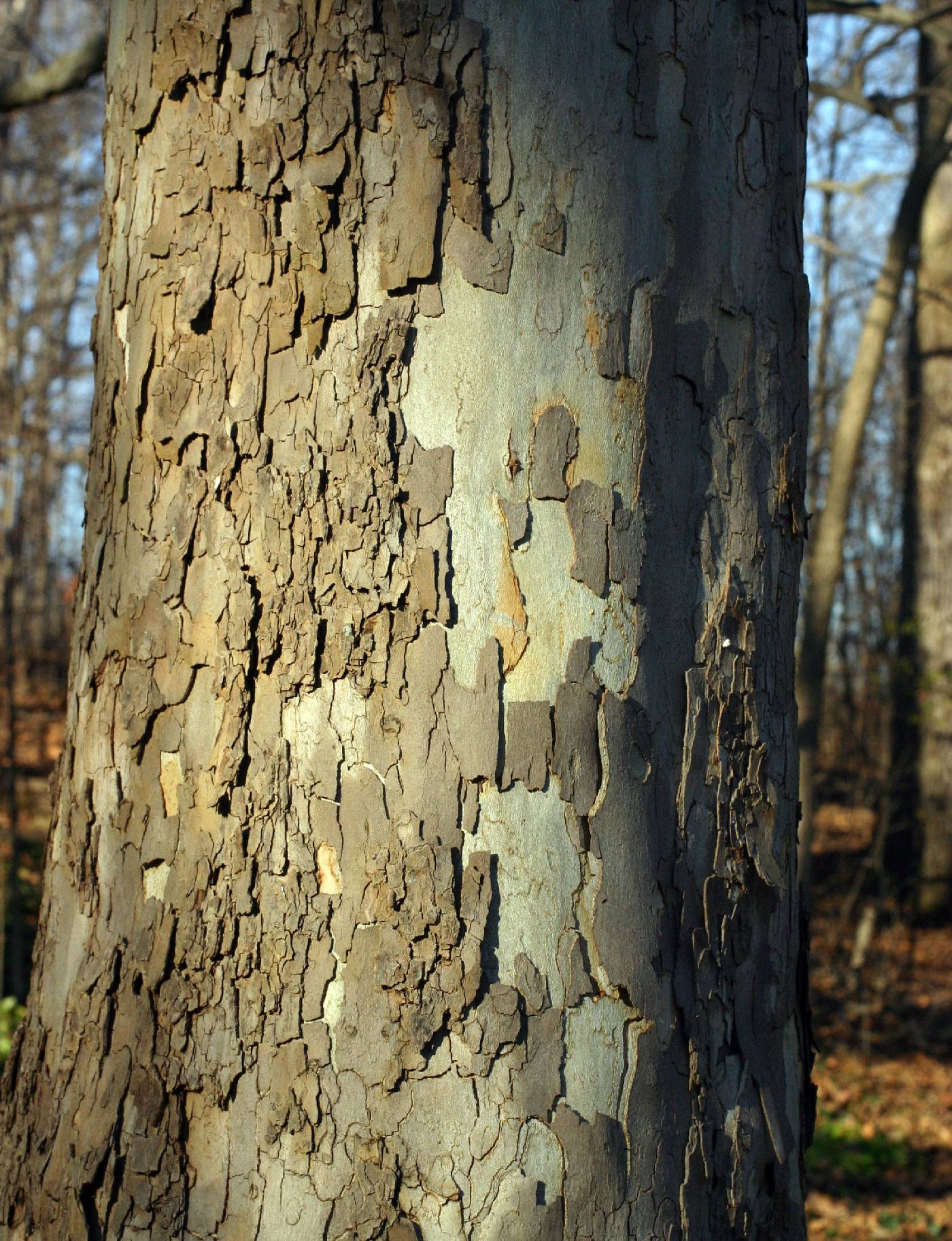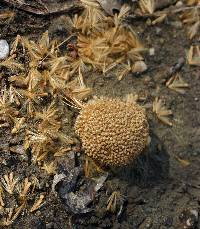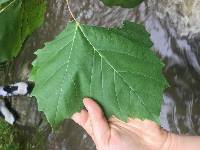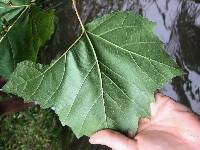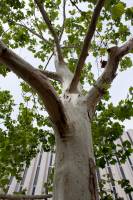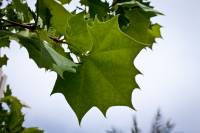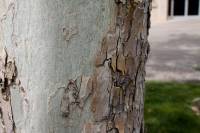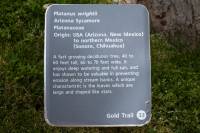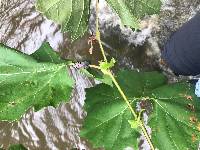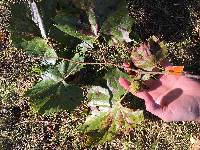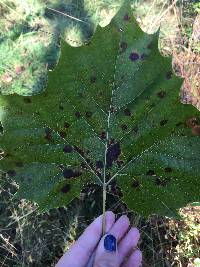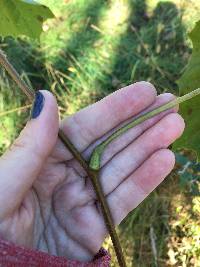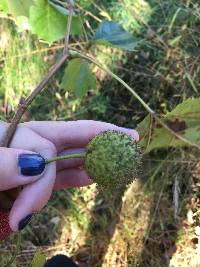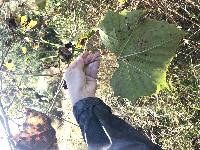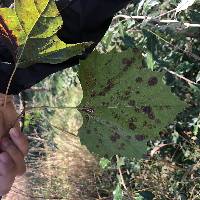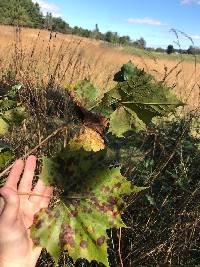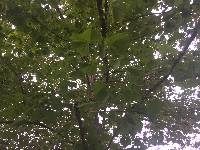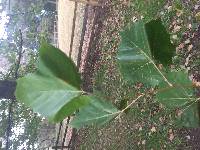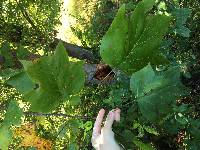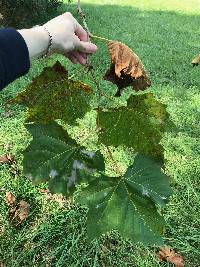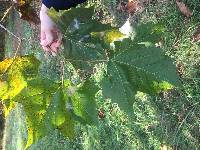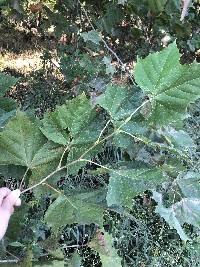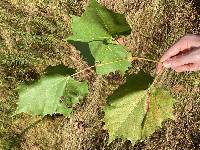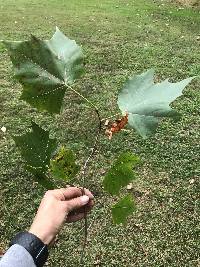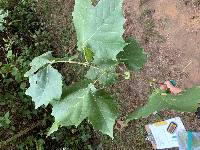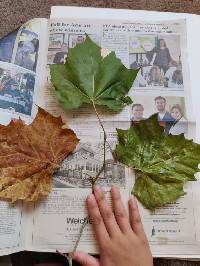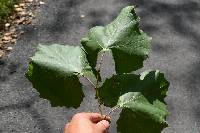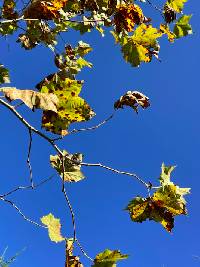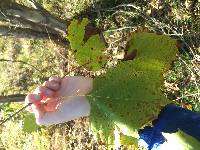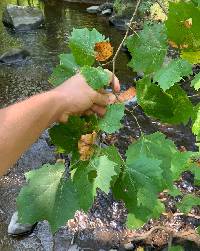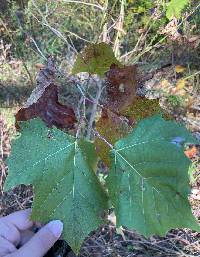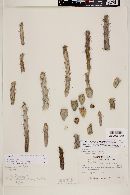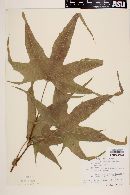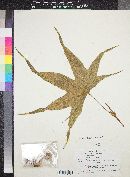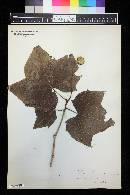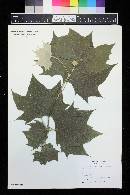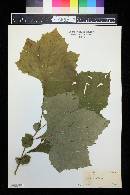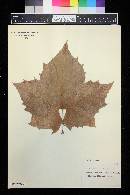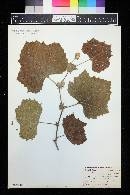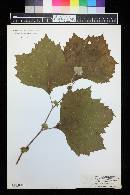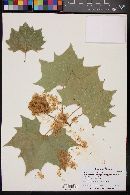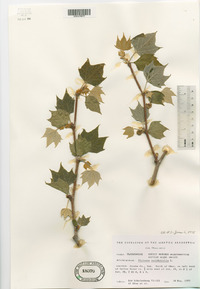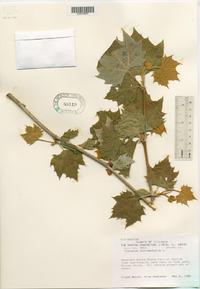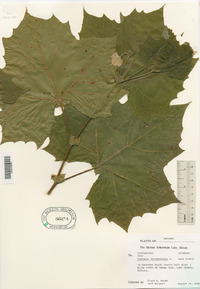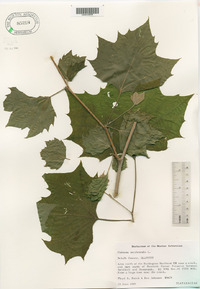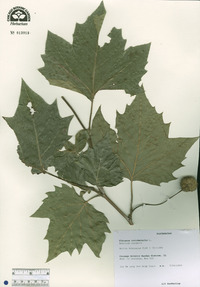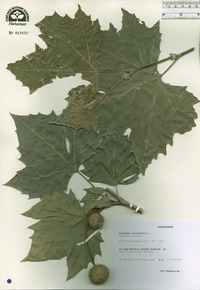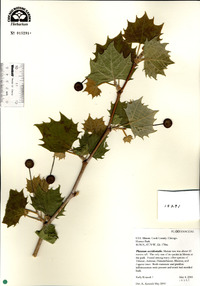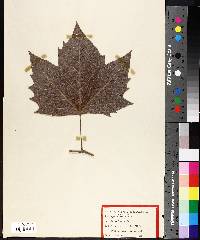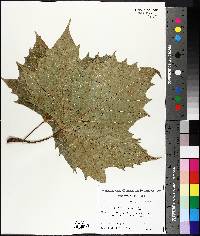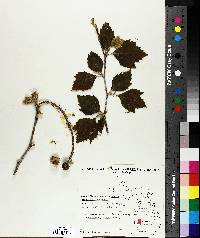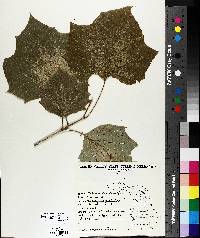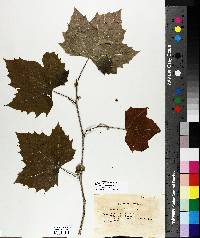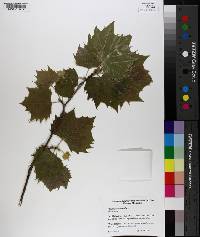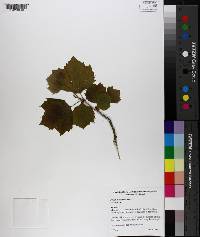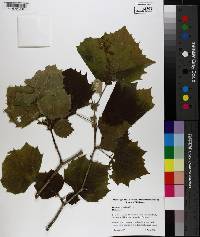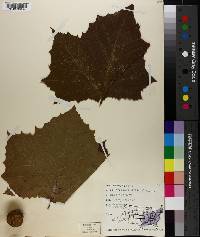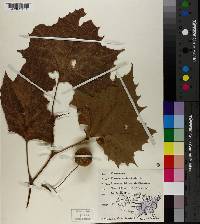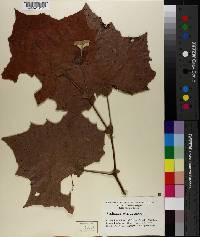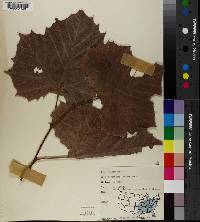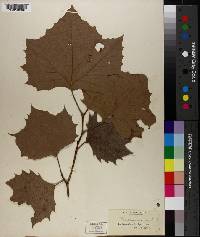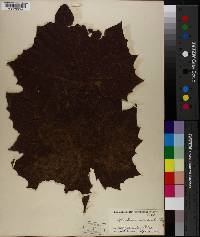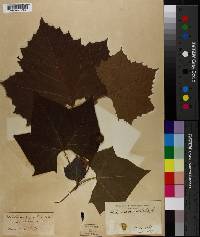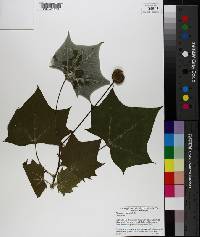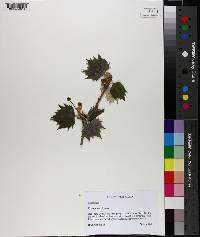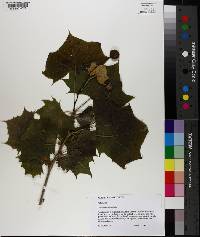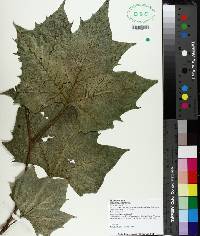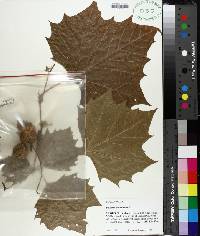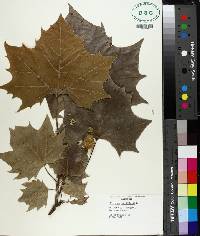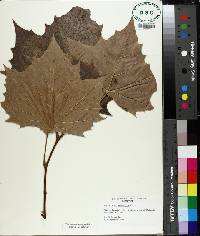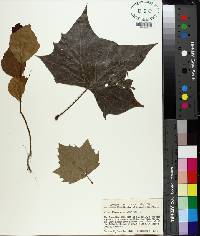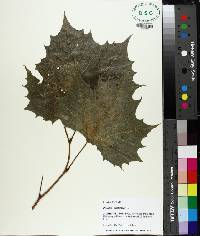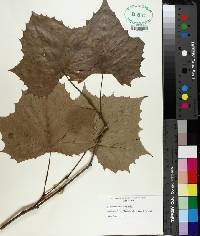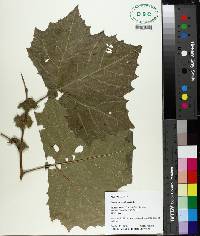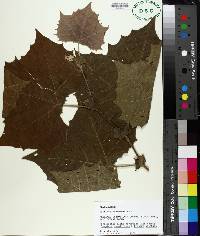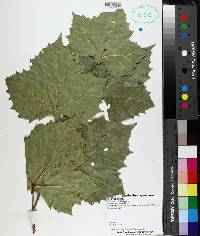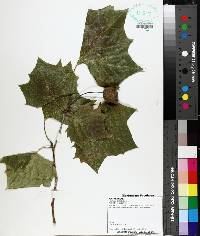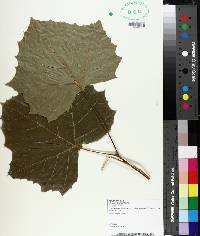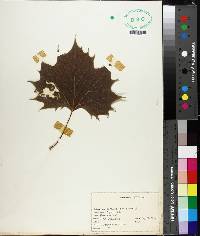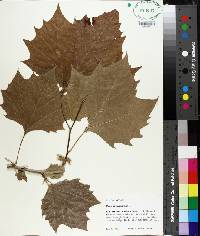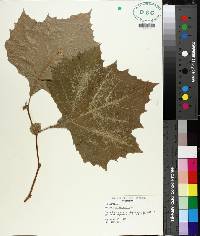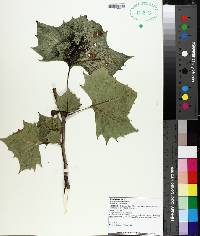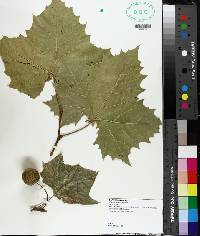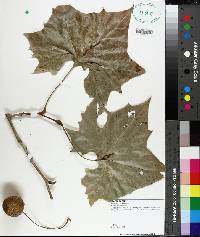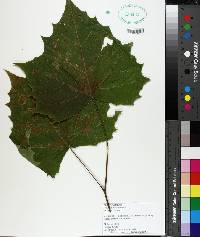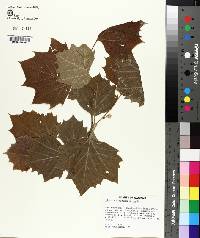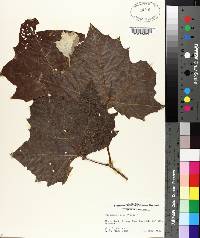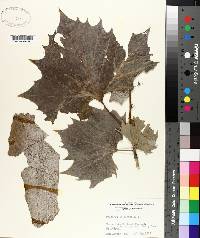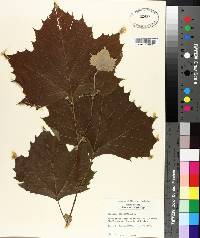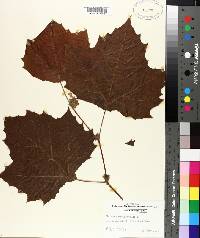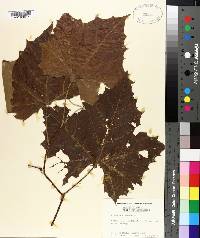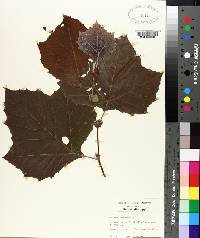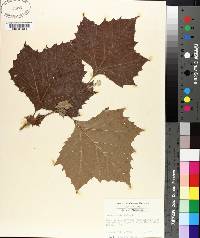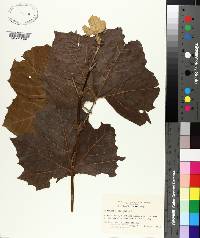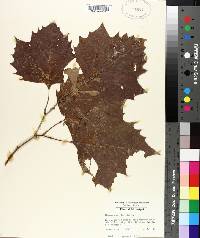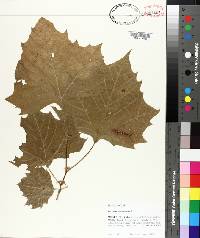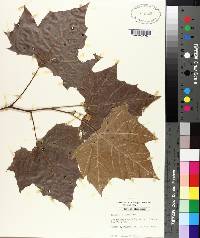
|
|
|
|
Family: Platanaceae
American Sycamore
|
Trees , to 50+ m, becoming massive; trunks straight and unbranched to great heights or low-branching or multitrunked, to 4+ m diam. Leaves: stipules entire to coarsely serrate. Leaf blade light green, usually shallowly 3-5(-7)-lobed, occasionally unlobed, 6-20+ × 6-25+ cm (to 30 × 40 cm on sucker shoots), not especially thick; lobes of blade mostly wider than long, basal lobes usually smaller, often strongly reflexed, sinuses broad and gently concave, depth of distal sinuses mostly less than 1/2 distance from sinus to base of blade, terminal leaf lobe 1/2-2/3 length of blade; margins entire to coarsely serrate, teeth sometimes short-awned, apex usually acuminate; surfaces glabrate, abaxially often persistently tomentose along veins. Pistillate inflorescences: heads 1(-2); fruiting heads 25-30 mm diam.; peduncle to 15 cm. Achenes 7-10 mm, basal hairs nearly as long. 2 n = 42. Flowering spring; fruiting late fall. Often abundant on alluvial soils near streams and lakes and in moist ravines, sometimes on uplands, sometimes on limestone soils, cultivated in parks and gardens and as a street tree; 0-950 m; Ont.; Ala., Ark., Conn., Del., D.C., Fla., Ga., Ill., Ind., Iowa, Kans., Ky., La., Maine, Md., Mass., Mich., Miss., Mo., Nebr., N.H., N.J., N.Y., N.C., Ohio, Okla., Pa., R.I., S.C., Tenn., Tex., Vt., Va., W.Va., Wis.; Mexico (Coahuila, Nuevo León, San Luis Potosí, and Tamaulipas). Of the angiospermous trees of North America, Platanus occidentalis is one of the tallest (to 50+m) and reaches the greatest trunk diameter (to 4+m). Trees with smaller and broader-than-long leaf blades, with lobes mostly entire, have been called P . occidentalis var. glabrata (Fernald) Sargent, especially in the western range of the species from Iowa to Mexico; the range of var. glabrata overlaps that of P . rzedowskii Nixon & Peale in Tamaulipas. Trees with the blade more deeply lobed, and the base long-cuneate and decurrent on the petiole, are occasional over much of the range of the species. They have been called P . occidentalis var. attenuata Sargent. The cultivated London plane-tree [ Platanus × acerifolia (Aiton) Willdenow, Platanus hybrida Broterius] will key here. It is distinguished by the lobes of its larger leaves being somewhat longer and narrower (often longer than wide), the fruiting heads one or two on each rachis, and the bark often somewhat greener. Many cultivars are available, some with deeper lobed or variegated leaves or with upright habit (F. S. Santamour Jr. 1986). It is often planted in cities because it is exceptionally well adapted as a street tree. Apparently it has not escaped in North America, where it is mostly seed-propagated. It is only occasionally reported as naturalized in Europe; there it is clonally propagated and is variously reported to be fertile or sterile. Reputedly, it is a hybrid of P . occidentalis with the Eurasian P . orientalis Linnaeus. Such a hybrid has been synthesized (F. S. Santamour Jr. 1972b). Native Americans used Platanus occidentalis for a variety of medicinal purposes, including cold and cough remedies, as well as dietary, dermatological, gynecological, respiratory, and gastrointestinal aids (D. E. Moerman 1986).
Tree 22 - 30 m tall, sometimes wider than tall, trunk 0.7 - 1.5 m in diameter Leaves: alternate, with a stout, 2 - 5 cm long stalk that is hollow at the base and encloses the bud and stipules that are 2.5 - 3.8 cm long. The blade is bright to dark green green above, paler and hairy-veined beneath, 10 - 20 cm long, often wider than the length, shallowly three- to five-lobed, middle lobe wider than the length, heart-shaped to squared at the base, coarsely toothed (rarely non-toothed). Leaves turn yellow in fall. Flowers: either male or female, borne on the same tree (monoecious), many very tiny flowers borne in dense, spherical heads, the male flower heads short-stalked and dark red, the female flower heads long-stalked and greenish. Fruit: a multiple of achenes, borne in dense heads hanging from long thin stalks, brown, 2 - 3 cm in diameter, spherical, persistent, seeds ripening and dispersing in winter and spring. Bark: thin, reddish brown near base, developing plate-like scales that flake off to reveal green or cream inner bark, appearing mottled or camouflaged. More inner bark is exposed higher in the tree. Twigs: zigzag, pale green and wooly, becoming dark green to grayish and smooth. Buds: shiny reddish brown, 6 - 9 mm long, conical with a blunt tip, angled 45 degrees from the stem, surrounded by the leaf stalk. Terminal buds absent. Leaf scars: nearly surrounding buds. Form: wide, open, and irregular, with large crooked branches. Similar species: At first glance the leaves of Platanus occidentalis may be mistaken for a maple leaf. However, the leaves of P. occidentalis are typically much larger and the leaf stalk nearly encloses the bud and has stipules at the base. It also has flaking reddish brown, green, and cream bark that appears camouflaged, spherical heads of fruit, and leaf scars that nearly surround the bud. Flowering: late April to early June Habitat and ecology: Common in alluvial plains and along streambanks in the southern part of the Chicago Region, often growing along the Illinois and Kankakee rivers. It is rare in the northern part of the region. Occurence in the Chicago region: native Notes: Platanus occidentalis is one of the tallest deciduous broadleaf trees in the United States. It is used in the landscape as a street or lawn tree. Hollowing of the trunk is caused by fire injury or ice damage on plants grown near rivers. Pioneers used these hollow logs to store grain or smoke meat. Etymology: Platanus comes from the Greek name for this tree. Occidentalis comes from the Latin word meaning western. Author: The Morton Arboretum Tree to 50 m, the trunk to 3 m thick, with pale greenish-gray to nearly white, exfoliating bark; lvs mostly reniform in outline, broadly 3-5 lobed, sharply serrate; stipules foliaceous, toothed or lobed; heads solitary, long-peduncled, 2.5-3 cm thick in fr; achenes 7-8 mm, nearly equaled by the subtending hairs; 2n=42. Moist or wet, alluvial soil; sw. Me. to s. Mich. and se. Minn., s. to Fla. and Tex.
P. بybrida Brot., the London plane, a fertile putative hybrid of P. occidentalis and P. orientalis L., is widely planted as a street-tree and occasionally escapes. It typically has 2 heads per infl, and the lvs are often more truncate or broadly cuneate at the base; 2n=42. (P. ءcerifolia) Gleason, Henry A. & Cronquist, Arthur J. 1991. Manual of vascular plants of northeastern United States and adjacent Canada. lxxv + 910 pp. ©The New York Botanical Garden. All rights reserved. Used by permission. From Flora of Indiana (1940) by Charles C. Deam In Indiana it is generally known as sycamore. This species, no doubt, is found in every county of the state except Benton County. It grows in low woods and on the low borders of lakes and streams. While it thrives in places that are inundated, it is not found in the "flats" of southeastern Indiana. It is an infrequent to a frequent tree but rarely forms a thick stand over several acres. …… Indiana Coefficient of Conservatism: C = 3 Wetland Indicator Status: FACW Deam (1932): This is the largest tree of the state, and the largest deciduous tree of the United States. Indiana has the distinction of having had the largest living sycamore in the U.S. It was located near Worthington, Indiana, and "in 1915 measured 43 feet and 3 inches in circumerence at five feet above the ground." The sycamore grew to great diameters in all parts of the state. It was commonly hollow, because it is believed the tree in early life is usually more or less injured by floating ice and debris which starts inner dcay. Hollow sycamore logs were commonly used by the pioneers in which to smoke their meat, and section of hollow logs about 12 dm. (4 feet) long were used to store grain and were known as "gums." "... on the banks of the Ohio River, in the state of Indiana, opposite the mouth of Salt River, [stands] a sycamore tree, which has stabled fourteen head of horses at one time, with ample room. It takes 75 long paces to go around its trunk, and you may with perfect ease turn a fourteen-foot pole in the inside of the cavity." (From page seven of the Big Black Walnut, Philadelphia, 1827, by T.S. Manning.) The value of sycamore lumber has been much underestimated. It has many uses such as butcher blocks, interior finish, furniture, piling, tobacco boxes, veneer, berry boxes, handles, wooden ware, etc. Indiana has led in the productioin of sycamore lumber for years. The sycamore is well adapted for shade, ornamental, and forestry purposes. It traansplants easily, grows rapidly, stands pruning well, and is comparatively free from injurious insects. It grows straight, tall, and usually with a rather narrow crown. It prefers moist soil, but adapts itself to dry situations. For planting overflow lands, or on the banks of streams it is one of the best species we have. It is also one of the best species for roadside tree planting, because it is deep rooted, grows tall, and does not produce dense shade. However, the blight has so severely injured this species throughout the state the past few years that it should be used with caution. |
|
|
|

